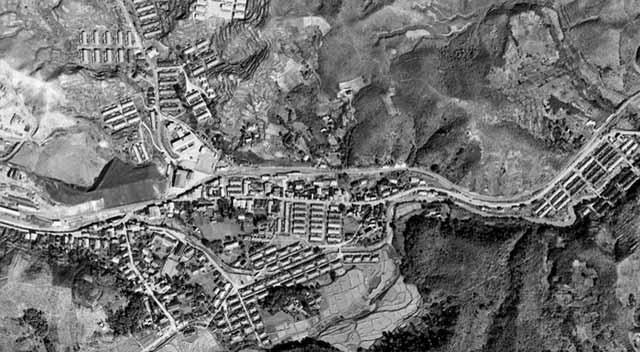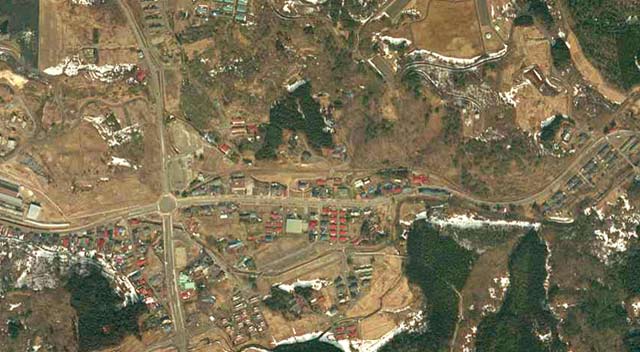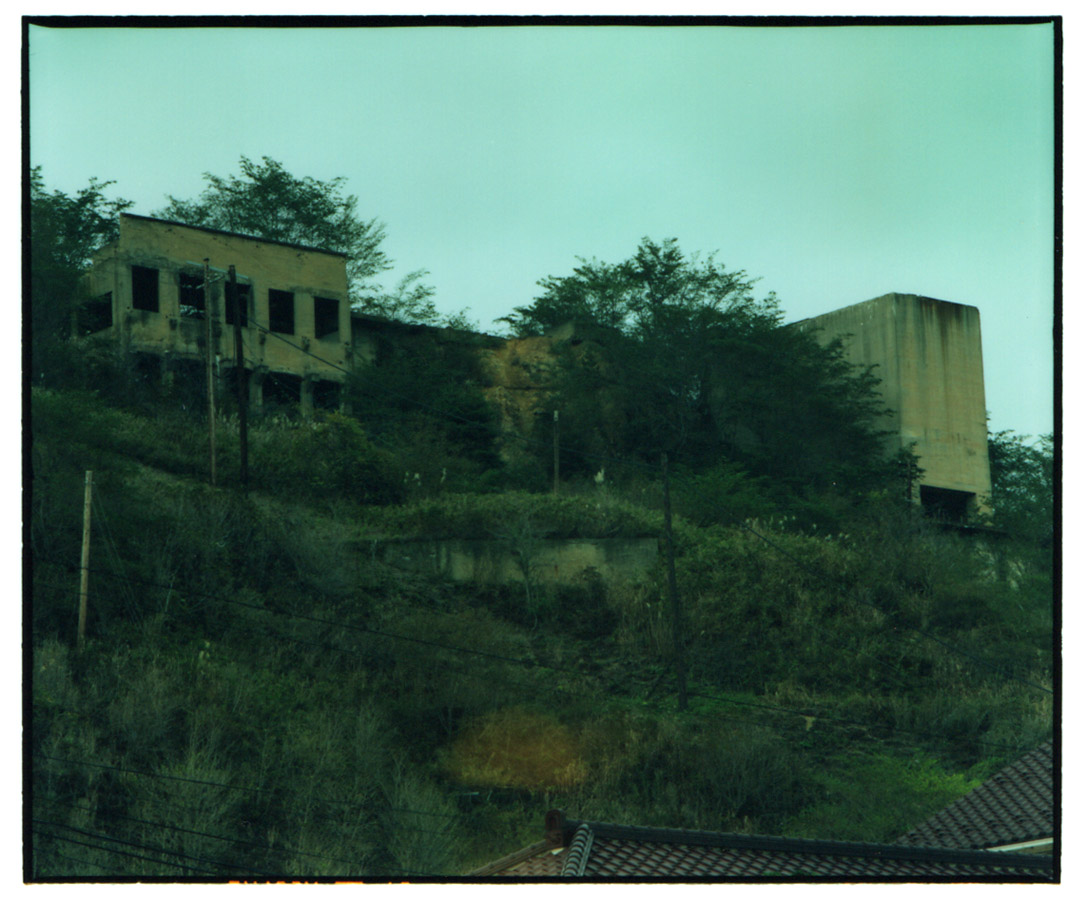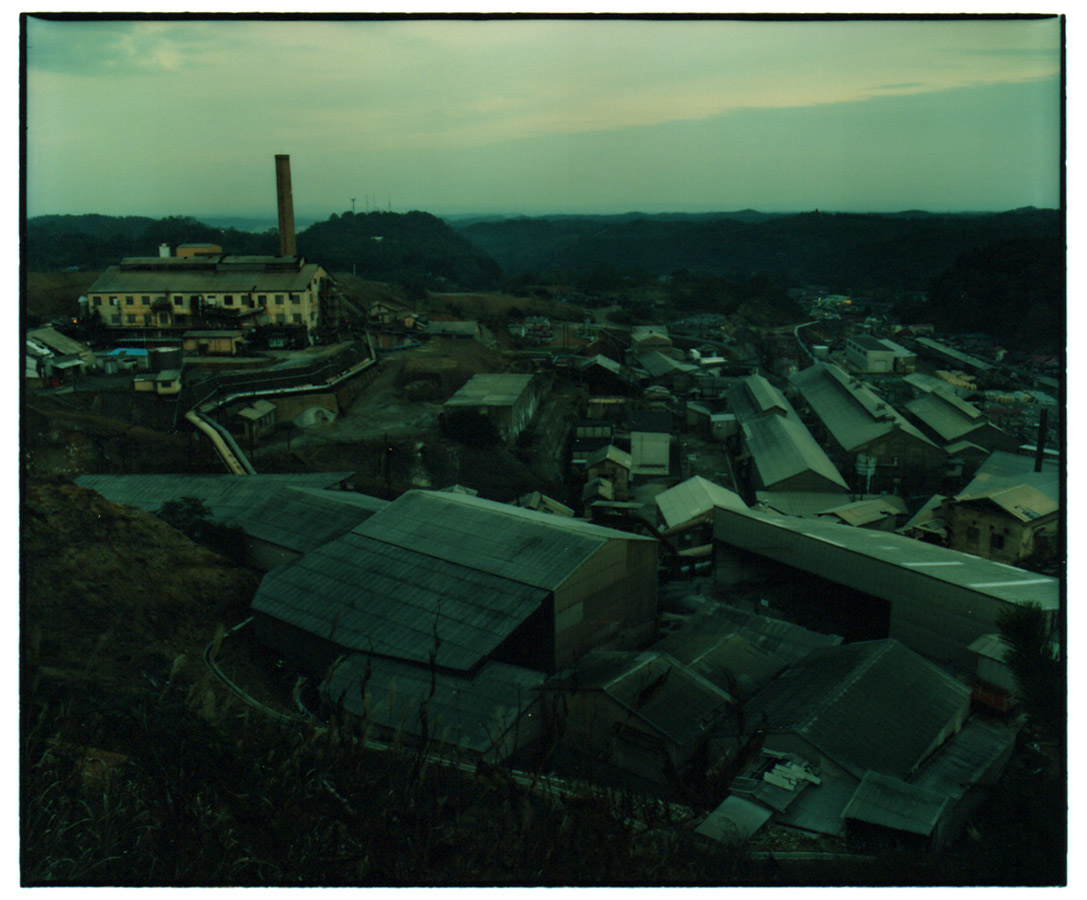細倉鉱山跡
発見は平安期大同または貞観年間と伝えられ、安土桃山期の天正年間は銀山として稼行されました。 江戸期は仙台藩の所管のもとで鉛が生産され、元禄、文化文政、安政年間に隆盛します。 当時は採掘坑の数から三十三ヶ山と呼ばれ、生産された鉛の多くは銀の製錬に用いられました。 明治期に入ると政府は国内全ての鉱物を官有化し、15 年期限の借区制を設けます。 これを受けて近江商人 清水和兵衛は 1873 年(明治 6 年)に借区を受けて開発を試みました。 その後、愛知の資本家 杉本正徳は 1886 年(明治 19 年)に事業を譲り受け、近代技術の導入や竪坑の開削を進めて 1890 年(明治 23 年)に細倉鉱山会社を設立します。 5 年後に鉛の生産額は国内首位を記録しますが、後に洪水被害を受けて経営は困窮しました。 次いで、1899 年(明治 32 年)に東京の貿易商 高田商会が高田鉱山として操業にあたり、休山を経て亜鉛電解製錬を開始します。 大戦景気を受けて生産は回復しますが、戦後恐慌や火災によって経営は傾き、1928 年(昭和 3 年)に共立鉱業に移管されました。 その後、1934 年(昭和 9 年)に三菱鉱業が事業を譲り受け、細倉は大規模開発を迎えることとなります。 高まる軍需を背景に生産は拡大し、1943 年(昭和 18 年)の粗鉱量は 291,107 t に及びましたが、二年後に空襲による被害を受けて操業は停止を余儀なくされました。 終戦後、高度経済成長とともに発展を続けた細倉は、1960 年代後半に最盛期を迎え、1965 年(昭和 40 年)の粗鉱量は 606,492 t を数えました。 しかし、石油危機や世界的不況を受けて事業規模は縮小に転じ、鉱業所は 1976 年(昭和 51 年)に細倉鉱業として分社化されます。 その後、金属価格の低迷や円高の影響を受けて閉山を迎えることとなります。 広大な敷地には、当時の製錬所跡が今も残ります。
1987 年閉山
Hosokura Mine
According to legend, the mine was discovered in the ninth century and then produced silver in the late 16th century. Afterwards, lead mining flourished twice under the control of the Sendai Domain at the end of the 17th century and in the first half of the 19th century. At the time, the mine had 33 mining sites, and produced lead was used for refining of silver and others. At the end of the 19th century, the Meiji government nationalized all of the minerals in the country and granted permission for contractors to mine in leasehold areas for 15 years. Thereupon, Wahe Shimizu, an Omi merchant, acquired leasehold rights in 1873 and began the development of the mine. Subsequently, Masanori Sugimoto, a capitalist in Aichi, took over the management in 1886. Sugimoto commenced the introduction of modern mining equipment and the construction of mining shafts and established Hosokura Mine Co., Ltd. in 1890. Although production of lead recorded the country's largest in 1895, the management declined later due to flood damage. In 1899, Takata Company, a trading company in Tokyo, acquired mining rights and renamed the mine Takata Mine. The company began electrolytic refining of zinc after a period of operational suspension. Then demand for zinc increased suddenly during the First World War, bringing a recovery in performance to the company. However, the management declined due to the recession after the war and a forest fire, which led to the transition of management to Kyoritsu Mining Co., Ltd. in 1928. In 1934, the mine came under the management of Mitsubishi Mining Company Ltd., and large-scale mine development commenced. Although the mine produced 291,107 tonnes of crude ore under an increase in military demand in 1943, air raids caused an operational pause two years later. After the war, Japan's rapid economic growth led the mine to prosperity, and its production reached a peak in the late 1960s, including 606,492 tonnes of crude ore in 1965. However, the oil crisis and the recessions of the 1970s caused a reduction in the operational scale. The company separated Hosokura Mining Works and transferred the management of the mine to newly formed Hosokura Mining Co., Ltd. in 1976. Nevertheless, the mine was closed due to a decline in the price of metals and a strong yen. The remains of a smelter still stand in the extensive grounds.
closure in 1987
宮城県栗原市鶯沢南郷荒町
鉛、亜鉛、硫化鉄、金、銀、銅
Nango-Aramachi, Uguisuzawa, Kurihara City, Miyagi
lead, zinc, iron sulfide, gold, silver, copper
鉱床は東西 6 km、南北 4 km ほどの範囲に広がり、鉱脈数は 160 条に上りました。 閉山までの粗鉱生産量は 2,300 万 t に及び、坑道の総延長は 600 km に達します。 戦時下の 1943 年(昭和 18 年)には 2,530 名の鉱員を抱え、鉱業所が位置する南郷地区では多くの集落が築かれて賑わいを見せました。 1942 年(昭和 17 年)には細倉鉱山駅が開設され、栗原鉄道(後の栗原電鉄)が貨物輸送を担います。 1987 年(昭和 62 年)の閉山に伴って亜鉛製錬部門は操業を休止した一方、鉛製錬部門は細倉製錬(後の細倉金属鉱業)として独立し、現在も操業を続けています。
The ore deposits consisted of over 160 ore veins and extended over an area of six kilometers from east to west and four kilometers from north to south. The mine produced 23 million tonnes of crude ore until its closure and had mine tunnels with a total length of 600 kilometers. The number of miners totaled 2,530 in 1943 wartime, and numerous settlements were formed and prospered around the mining works in Nango area. Hosokura Mine Station opened with the purpose of product transportation in 1942, and Kurihara Railway, later Kurihara Electric Railway, shipped products until closure of the mine. The zinc smelting department was shut down due to the mine closure in 1987, while the lead smelting department was separated as Hosokura Smelting Co., Ltd., later Hosokura Metal Mining Co., Ltd., and has taken over the operations.










